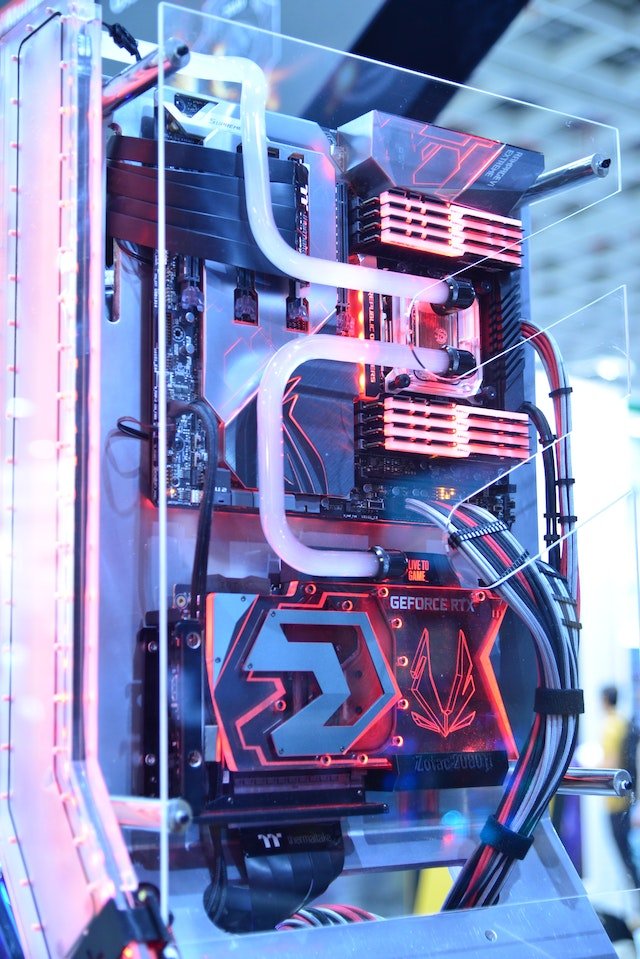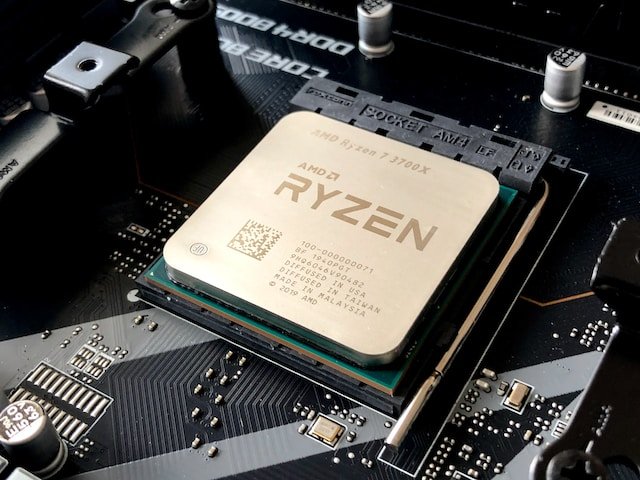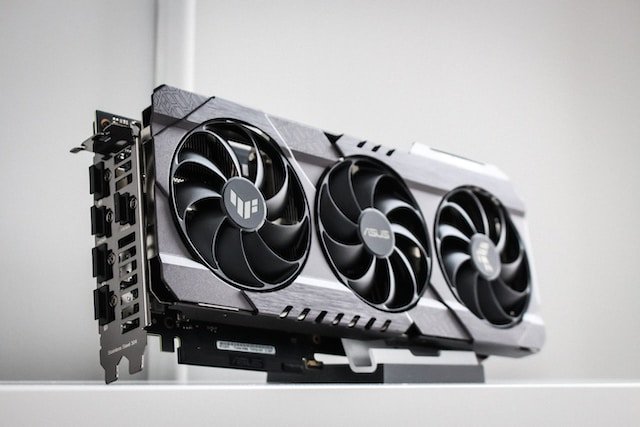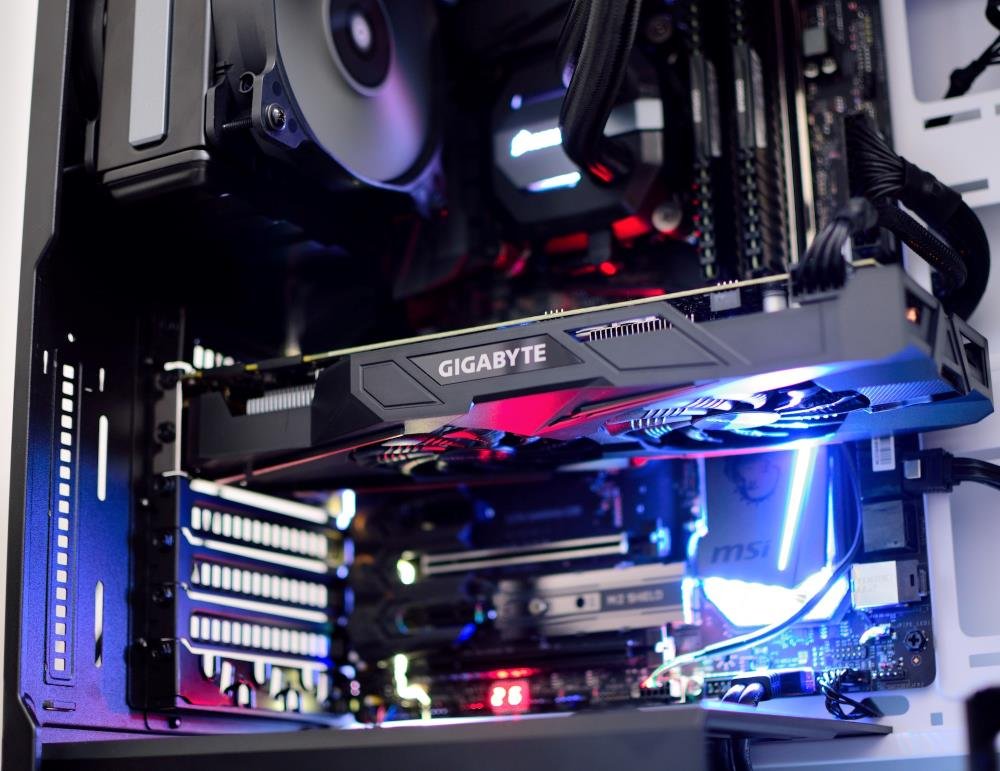I. Introduction
The graphics card, often seen as the heart of visual computing, plays a pivotal role in our digital experiences. Still, many people aren’t aware of its function or importance. As technology advances, the demand for high-quality visuals has become a norm, not an exception. This article delves deep into the world of graphics cards, exploring what they are, how they work, and why they’re so crucial.
II. What is a Graphics Card?
A. Definition
In the simplest terms, a graphics card is a piece of computer hardware that generates and outputs images to your monitor. It’s like a translator, taking the binary data from the CPU and turning it into a picture you can see and interact with. Just as a translator needs to understand both languages to convert words accurately, a graphics card needs to comprehend the instructions from the CPU and translate them into visual information that your monitor can display.

B. Components of a Graphics Card
A graphics card consists of several key components that work together to generate the images you see on your screen.
1. GPU (Graphics Processing Unit)
The GPU, also known as the “brain” of the graphics card, is responsible for making millions of complex calculations every second to render images, animations, and videos in real-time. It’s a specialized electronic circuit designed to rapidly manipulate and alter memory to accelerate the creation of images intended for output to a display device. When you’re playing a game or watching a video, it’s the GPU that’s working hard to ensure everything appears smooth and realistic.
2. VRAM (Video Random Access Memory)
VRAM is the dedicated memory that the GPU uses to store the information it needs to process images. This could be texture data, pixel data, or other types of visual information. The larger the VRAM, the more data it can store, which in turn allows the GPU to quickly access and process the data it needs to render images. This is especially important in gaming or other graphic-intensive tasks where large amounts of data need to be processed quickly.

3. Cooling System
Graphics cards can get hot, especially when they’re handling complex tasks. This is where the cooling system comes into play. The cooling system, usually a combination of heatsinks and fans, dissipates the heat generated by the GPU and other components. This prevents overheating, which can cause slowdowns, crashes, or even damage to the hardware.
4. Power Supply
The power supply unit (PSU) delivers the necessary energy for the graphics card to function. A powerful graphics card requires a strong power supply to operate. A good power supply ensures stability and longevity, preventing crashes and other performance issues related to inadequate power.
C. How a Graphics Card Works?
Understanding how a graphics card works involves delving into the intricate process of image rendering. The GPU takes binary data from the CPU and turns it into an image. This process involves several steps:
- Rendering: The GPU first calculates how the final image should look based on the data it receives. This involves various calculations to determine the position, color, and texture of each pixel.
- Rasterization: The GPU then turns the data into a raster image (a grid of pixels), which is stored in the VRAM.
- Output: Finally, the data stored in the VRAM is sent to the monitor, which displays it as the final image.
Throughout this process, the VRAM stores the information the GPU needs, while the cooling system and power supply ensure the GPU can work efficiently without overheating or running out of power.
In essence, a graphics card is a complex piece of hardware that’s crucial for creating the visual elements we see on our screens. Whether you’re watching a movie, playing a game, or simply browsing the web, it’s the graphics card that makes it all possible.
III. Types of Graphics Cards:
The world of graphics cards isn’t one-size-fits-all. Various types cater to different needs, budgets, and system configurations. It’s important to understand these differences to choose the right graphics card for your particular needs.
A. Integrated Graphics
Integrated graphics, as the name implies, are built directly into the processor of a computer. This integration provides a cost-effective solution for basic computing needs, as it eliminates the need for a separate graphics card. Integrated graphics share resources with the CPU, including memory, which can limit their performance compared to other types of graphics cards.

Ideal for basic tasks like web browsing, document editing, and video streaming, integrated graphics are common in laptops and budget desktops. However, they may struggle with more graphics-intensive tasks like gaming, 3D rendering, or video editing. If your computer use is primarily casual and non-intensive, integrated graphics should serve your needs well.
B. Discrete Graphics
Unlike integrated graphics, discrete graphics cards are independent components that are installed into the motherboard. They have their own GPU and VRAM, which means they don’t need to share resources with the CPU. This independence allows discrete graphics cards to deliver far superior performance, especially for demanding tasks like gaming or video editing.

Discrete graphics cards come in a wide range of options, from budget-friendly models suitable for light gaming to high-end cards designed for serious gamers and professionals. When choosing a discrete graphics card, you’ll need to consider factors like the GPU’s performance, the amount of VRAM, the cooling system, and the power supply requirements.
C. Professional Graphics Cards
Professional graphics cards, also known as workstation graphics cards, are designed for high-performance tasks such as 3D design, video editing, and other professional applications. They’re a step above the rest in terms of performance, precision, and reliability.
These cards offer features and optimizations not found in consumer-level cards, such as ECC memory and specific GPU optimizations for professional software. These extra features come with a higher price tag, but for professionals who rely on their computer for their work, the investment can be well worth it.

In conclusion, there’s a graphics card for every type of user. From integrated graphics for casual use to professional graphics cards for high-performance tasks, understanding these types will help you make the best choice for your specific needs and budget.
IV. Why is a Graphics Card Important?
The influence of a graphics card extends beyond just rendering images and animations. It’s the driving force behind a variety of tasks that define our digital experiences. Here’s why a graphics card is so important:
A. For Gaming
The importance of a graphics card becomes distinctly clear when it comes to gaming. The quality of your gaming experience depends largely on the capabilities of your graphics card. It’s the graphics card that determines how well a game can run, the quality of the graphics, and the overall gaming experience.
A powerful graphics card can deliver stunning visuals, seamless gameplay, and high frame rates, even with the settings cranked up. It can handle complex 3D environments, realistic lighting effects, and high-resolution textures, making your gaming experience more immersive. For serious gamers, a good graphics card isn’t just important—it’s essential.
B. For Video Editing and 3D Rendering
Video editing and 3D rendering are two more areas where a powerful graphics card is crucial. These tasks require a lot of computational power, as they involve manipulating large amounts of data to create high-quality video or 3D models.
A high-performance graphics card can handle these tasks with ease, accelerating rendering times and ensuring smooth playback. It can also support advanced features such as real-time 3D rendering, 4K video editing, and color grading. If you’re a professional video editor or 3D artist, a robust graphics card can significantly enhance your productivity and creativity.
C. For General Computing and Multitasking
Even for general computing tasks and multitasking, a good graphics card can make a significant difference. Whether you’re browsing the web, watching videos, using office applications, or running multiple applications at once, a graphics card ensures everything runs smoothly.
The graphics card helps render images, animations, and videos more quickly, reducing the load on your CPU. This allows your computer to work more efficiently, which can make a noticeable difference in its speed and responsiveness. For power users who often have dozens of tabs open or use multiple monitors, a decent graphics card can provide a smoother and more enjoyable computing experience.
In essence, a graphics card is a critical component that impacts the performance and quality of your digital experiences. No matter what you use your computer for, a graphics card ensures you get the best possible performance and visual quality.
V. Choosing the Right Graphics Card
Choosing the right graphics card can seem daunting given the plethora of options available. However, breaking down the process into several key considerations can simplify the task and ensure you find the right fit for your specific needs.

A. Understand Your Needs
The first step in choosing the right graphics card is to understand your specific needs. Are you a casual user who mainly browses the web and watches videos? Or are you a hardcore gamer looking for high-resolution, high-frame-rate experiences? Maybe you’re a professional whose work involves graphics-intensive tasks like 3D rendering or video editing. Each of these scenarios requires a different level of graphical power.
B. Check the GPU and Memory
Once you’ve determined your needs, the next step is to consider the technical specifications of the graphics card. Two of the most important specs to look at are the GPU and the amount of VRAM.
The GPU is essentially the heart of the graphics card. It’s responsible for all the heavy lifting when it comes to processing visual data. A more powerful GPU will be able to process this data faster, leading to smoother and more detailed visuals.
VRAM, on the other hand, is the graphics card’s dedicated memory. It stores the data that the GPU needs to process. More VRAM allows the graphics card to handle higher resolution textures and images, which is especially important for gaming and professional tasks.
C. Consider the Power Supply and Cooling
Last but not least, don’t forget about the power supply and cooling system. Make sure your computer’s power supply can handle the demands of the graphics card. Also, consider the graphics card’s cooling solution. A better cooling system will help the card maintain optimal performance and extend its lifespan.
VI. The Final Frame: Appreciating the Graphics Card
We’ve journeyed through the intricate world of graphics cards, unraveling its technical jargon and understanding its crucial role in our digital experiences. From rendering stunning game environments to ensuring smooth video playback, the graphics card is a silent hero that significantly enhances our interactions with the digital world.
Whether you’re a gamer, a professional, or a casual user, understanding the inner workings of a graphics card and its importance can empower you to make informed decisions about your technology. So, next time when you’re immersed in a visually stunning game or marveling at a high-definition video, take a moment to appreciate the hardworking graphics card behind those impressive visuals.
A graphics card isn’t just a piece of hardware; it’s a testament to human ingenuity and the remarkable progress we’ve made in digital technology. Its importance extends beyond its functional role, serving as a symbol of our continuous pursuit of better, more immersive digital experiences.
Frequently Asked Questions
1. Q: What is a graphics card?
A: A graphics card is a hardware component in a computer that generates and outputs images to your monitor. It translates binary data from the CPU into visual information that your monitor can display. It consists of several key components such as the GPU (Graphics Processing Unit), VRAM (Video Random Access Memory), a cooling system, and a power supply.
2. Q: Why is a graphics card important?
A: A graphics card is crucial for various digital experiences such as gaming, video editing, 3D rendering, and general computing. It’s responsible for rendering images, animations, and videos, reducing the load on your CPU and ensuring smooth performance and high-quality visuals.
3. Q: What are the different types of graphics cards?
A: Graphics cards can be categorized into three main types: Integrated graphics (built directly into the processor), discrete graphics (independent components installed into the motherboard), and professional graphics cards (designed for high-performance tasks such as 3D design and video editing).
4. Q: How do I choose the right graphics card?
A: Choosing the right graphics card involves understanding your specific needs, checking the GPU and memory specifications, and considering the power supply and cooling system. Your choice should align with your computing needs, be it casual usage, gaming, or professional tasks.































































Comments 3